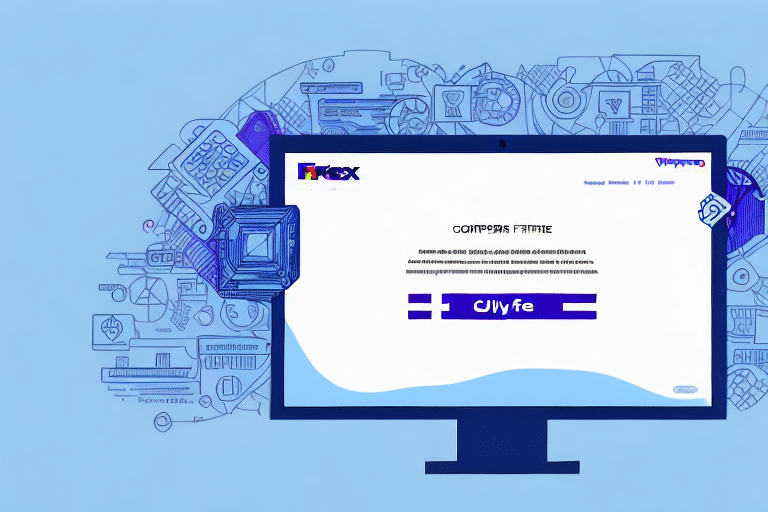FedEx Ship Manager Integration: Comprehensive Guide to Troubleshooting and Optimization
If you're having trouble with your FedEx Ship Manager integration, one of the most frustrating issues you may encounter is not being able to see your profile. While this can be a tricky problem to diagnose, it's not uncommon and can often be easily resolved with a few simple troubleshooting steps. In this article, we'll provide a comprehensive overview of FedEx Ship Manager integration basics and common issues, explain why your profile may not be visible, and offer practical tips and best practices for keeping your integration running smoothly.
1. Understanding FedEx Ship Manager Integration Basics
Before we dive into the specific issue of why you can't see your profile, it's worth reviewing the basics of FedEx Ship Manager integration. At its core, Ship Manager is designed to simplify and streamline the shipping process by connecting your existing shipping software or e-commerce platform to FedEx's shipping services. This allows you to generate shipping labels, track shipments, and manage other shipping tasks directly from your existing software, making the process faster and more efficient.
There are several ways to integrate FedEx Ship Manager into your existing systems, including using APIs or custom extensions. Some popular e-commerce platforms, such as Shopify and WooCommerce, also have built-in integrations with Ship Manager, making it even easier to get up and running.
Integration Methods
- API Integration: Allows for direct communication between your software and FedEx services.
- Custom Extensions: Tailored solutions to fit specific business needs.
- E-commerce Platform Plugins: Ready-made integrations for platforms like Shopify and WooCommerce.
2. Common Issues with FedEx Ship Manager Integration
While FedEx Ship Manager is designed to be user-friendly for most businesses, it's not uncommon to encounter issues or errors when integrating it with your existing systems. Some of the most common issues that users may encounter with Ship Manager integration include:
- The inability to connect to the FedEx server
- Problems with generating or printing shipping labels
- Issues with transferring shipment data from your software to Ship Manager
- Error messages or codes that are difficult to decipher
If you're encountering any of these issues, or any other problems with your Ship Manager integration, don't worry—help is available. By understanding the potential causes of these issues, you'll be better equipped to troubleshoot and resolve them quickly and efficiently.
3. Why Your Profile May Not Be Visible in FedEx Ship Manager
One issue that may arise with FedEx Ship Manager integration is the inability to see your profile. This can be problematic because it may prevent you from completing shipments and managing other aspects of your shipping account.
Possible reasons for this issue include:
- Incorrect FedEx account credentials
- Issues with your Ship Manager API key or integration settings
- FedEx Ship Manager software or website problems
- Computer or internet connection issues
- Insufficient access permissions for your account
To resolve this, carefully check your account settings and seek technical support from FedEx if necessary. In most cases, with some troubleshooting and experimentation, you should be able to get your profile up and running again quickly.
Verifying Account Credentials
Ensure that your FedEx account credentials are correct and up-to-date. Incorrect login information is a common cause of profile visibility issues.
API Key and Integration Settings
Check that your API key is properly configured and activated. Inaccurate or inactive API keys can prevent proper communication between your software and FedEx Ship Manager.
4. Checking FedEx Ship Manager Integration Functionality
If you're experiencing any issues with your Ship Manager integration, it's important to verify that all components of the integration are functioning correctly. Here are some tips and best practices:
- Update and verify your FedEx account credentials.
- Ensure your API key is correctly configured and activated.
- Confirm that your software or e-commerce platform is fully integrated with Ship Manager.
- Test your integration by creating a dummy shipment and tracking it through the process.
If issues persist after these checks, seek technical support from FedEx or your software provider.
Testing the Integration
Running a dummy shipment helps identify where the integration process might be failing.
5. Troubleshooting Common FedEx Ship Manager Errors
Dealing with cryptic error messages and codes can be challenging when troubleshooting Ship Manager integration. However, with careful analysis, it's often possible to resolve these issues effectively.
Common error messages include:
- "Unable to connect to the FedEx server"
- "Unable to generate shipping label"
- "Invalid API key"
- "Unable to process shipment data"
To resolve these issues:
- Carefully read the error message and review your settings and credentials.
- Update your API key or restart your software if necessary.
- Check for known issues or bugs on the FedEx Developer Portal or software forums.
- Ensure your software is up-to-date and compatible with Ship Manager.
- Test the integration on a different computer or internet connection to rule out local issues.
- Contact FedEx or your software provider's technical support for assistance.
6. Resolving the "Unable to Connect" Error
The "unable to connect" error is a common issue when integrating Ship Manager. It can be caused by problems with your API key, network connectivity, or firewall settings.
Steps to resolve:
- Verify that your API key is correctly configured and activated.
- Ensure your internet connection is stable, and no firewalls or security settings are blocking communication with the FedEx server.
- Restart your computer and/or software to reset settings and services.
By systematically addressing these areas, you can resolve the "unable to connect" error and restore proper functionality to your Ship Manager integration.
7. Addressing Shipment Data Transfer Issues
If your shipment data isn't transferring properly via Ship Manager, manual entry can become cumbersome. Troubleshooting can help restore seamless data flow.
Common causes:
- Incorrect or missing shipment details.
- Compatibility issues between your software/platform and Ship Manager.
- Problems with your API key or integration settings.
- Software or platform issues requiring updates or patches.
To troubleshoot:
- Ensure that both your software and Ship Manager settings are up-to-date.
- Test integration with various data types and formats to identify specific issues.
8. Resolving Shipping Label and Packaging Issues
Problems with generating shipping labels or packaging details can stem from incompatible settings, incorrect label formats, or outdated software configurations.
Steps to resolve:
- Verify that your software/e-commerce platform is properly integrated with Ship Manager and all settings are compatible.
- Use the correct label format and software configuration for your specific shipment requirements.
- Seek support from FedEx or your software provider to debug and ensure label generation and packaging processes work as expected.
9. Keeping Your FedEx Ship Manager Integration Up-to-Date
Maintaining up-to-date software components is crucial for smooth Ship Manager integration. Regular updates ensure access to the latest features and bug fixes.
Recommendations:
- Regularly check your software or e-commerce platform for new releases or patches.
- Subscribe to relevant software and FedEx Ship Manager updates or newsletters.
10. Best Practices to Avoid Common FedEx Ship Manager Integration Issues
Implementing best practices can help prevent common integration issues:
- Double-check your FedEx account credentials and API key settings regularly.
- Conduct routine tests of your Ship Manager integration with dummy shipments.
- Stay informed about the latest software and Ship Manager updates.
- Promptly seek assistance from FedEx or your software provider when issues arise.
API Key Management
Properly managing and securing your API key is essential for successful integration. Ensure that your API key is kept confidential and is regularly monitored for unauthorized use.
11. Understanding the Role of API Keys in FedEx Ship Manager Integration
Your API key is a crucial component of your Ship Manager integration. It acts as a unique identifier, enabling communication between your software/platform and the FedEx server for tasks like generating shipping labels and tracking shipments.
To ensure effective use:
- Confirm that your API key is accurate and active in your software settings.
- Manage your API keys through the FedEx Developer Portal or API management console.
12. Seeking Technical Support for FedEx Ship Manager Integration Issues
If you encounter persistent problems with your FedEx Ship Manager integration, contacting technical support is the most effective way to resolve them. FedEx and your software provider's support teams can assist with diagnosing and fixing issues, as well as offering guidance on best practices.
When seeking support, provide detailed information about the issue, steps you've already taken to troubleshoot, and any error messages you've encountered to facilitate a quicker resolution.
13. Maintaining a Seamless Ship Manager Integration Experience
To ensure a smooth and uninterrupted experience with your Ship Manager integration, following these best practices is essential:
- Regularly test your integration with dummy shipments.
- Keep all software and integration components updated to the latest versions.
- Adhere to best practices for API key management and integration settings.
- Stay informed about the latest updates from FedEx Ship Manager.
Conclusion: Successfully Managing Your FedEx Ship Manager Integration
Integrating FedEx Ship Manager with your existing software or e-commerce platform can significantly streamline your shipping processes and enhance efficiency. However, challenges such as profile visibility issues and data transfer problems can arise. By following the tips, best practices, and troubleshooting strategies outlined in this guide, you can effectively address these issues and maintain a robust Ship Manager integration. Remember to leverage technical support from FedEx or your software provider when needed to ensure your integration continues to operate smoothly.




















